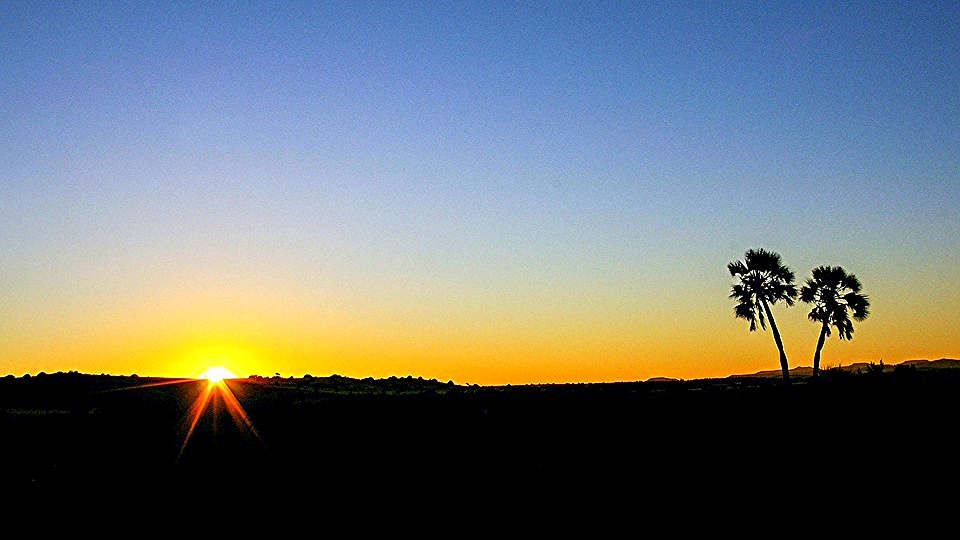I had no set plans for my stay in Namibia which was lucky, since I had no driving licence. In another country, this would have been less of a problem but, outside of Windhoek (the country's capital) public transport wasn't particularly developed. A few years ago, in the US, I had secretly enjoyed being regarded as eccentric ("You have no licence?" "Yes, indeed not...many of us Europeans never get round to getting behind the wheel."). Now, albeit grudgingly, I could see that my stubborness in refusing to deal with a certain rite of passage could end up being rather a disadvantage.
Or perhaps not, if I continued to thumb my way around Africa?
Several hitches later I had found myself in Luderitz, a tiny town on the west coast of the country, packed out with German ex-pats, many of whom owned restaurants where even the menus, quite charmingly, were in the mutter spracht. At the local camp site (I might not have had a licence, but I did have a tent and sleeping bag) I'd befriended 3 Australians, who were driving round the country in a beaten-up Mercedes that they'd bought back in Joburg. Over a few beers, on the second night, they mentioned they were heading next to Sossuvlei, a series of spectacular sand dunes in the heart of the Namib Naukluft park. They had space and all I had to do was kick in some gas money and tell a few stories on the long journey east. It was too good an invitation to turn down.
The next evening, after a long drive, along gravel roads that twisted and turned and left me acutely nauseous, we arrived at our destination. It was dusk by now and again and again we found ourselves veering from one side of the road to the other, swerving to avoid the numerous bat-eared foxes that shot out in front of our car. Tired, hungry, and cold, I wanted nothing more than to pitch my tent, take a shower and build a fire. Unfortunately, the camp ground's gates were padlocked, and the guard so sullen that not even the offer of a generous, generous tip could persuade him to open up for us. Too tired to protest, the boys got out their mats and slept on the ground. I, without meaning to, fell asleep in the back of the Mercedes, whilst looking up at an inky sky, filled with thousands of stars twinkling as brightly as any I had ever seen.
The next morning, I awoke at 5 am with a start. My fellow passengers were sprawled out on their mats, dead to the world. Not knowing for how long they would slumber I decided to wander off and explore. Less than fifteen minutes into my trek, a white 4WD pulled over, a window rolled down and two guys in Ray Bans and floppy hats smiled at me.
""Where are you heading?"
"No real plans. Just an early morning stroll."
"Jump in. We're going somewhere you have to see."
Paul and Ed were from the capital, and taking a day off en route back from a convention in the south they'd been attending. This wasn't their first trip to the Namib desert - they were regulary visitors here. But, as they'd said, they expect this journey to be special. They were en route to the vlei - a shallow marshy area, filled with water, and surrounded by sand dunes, that once every few years, would flood. As luck would have it for me, the rains had recently come - only two weeks ago, the park had been cordoned off entirely as a result of freak torrential rains (the first of their kind in 20 years) that had flowed into the Tsauchab river. But now the fierce heat had returned and all that was left was dried mud that was slowly beginning to crack.
Climbing out of the jeep, I looked for some time at the scene before me - white mud, dazzling and cloudless blue sky and vivid red sand dunes. It was hard not to be impressed by Mother Nature. And the stillness, the complete stillness of the area, struck me for the first (but not the last) time. We set off, trekking on foot to the Dead Man's vlei, an area so barren that even desert plants failed to grow there. Hundreds of years ago, a drought had struck and the existing habitat had been cut off from the river. Now I saw the result. Around me stood acacia and camel thorn trees scorched black by the sun. In simple terms, they were there because it was too hot for them to decompose.
"They aren't petrified, just dessicated" Dave told me. "And they're in the region of 900 years old."
A bona fide Tree Graveyard.


